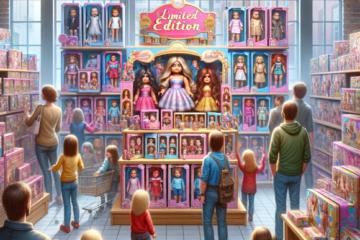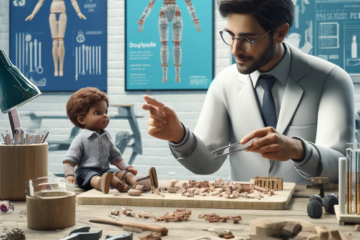In the realm of childhood playthings, dolls have always held a significant place. They serve as companions, mirrors of imagination, and vehicles for storytelling. However, in recent times, a wave of controversy has swept over the toy industry, specifically concerning dolls with unrealistic physical features.
These dolls, often criticized for perpetuating unrealistic beauty standards, have ignited heated debates among parents, educators, and activists alike. The concern stems from the portrayal of exaggerated features such as impossibly tiny waists, oversized eyes, and flawless complexions, which some argue can negatively impact children’s self-esteem and body image.
One of the primary arguments against dolls with unrealistic physical features is their potential to shape young minds’ perceptions of beauty. Critics argue that by presenting an idealized version of the human form, these dolls create unrealistic expectations that can lead to body dissatisfaction and low self-esteem, particularly among impressionable children.
Moreover, there’s a growing recognition of the need for diversity and inclusivity in children’s toys. Many advocates emphasize the importance of representation, calling for dolls that reflect the diverse array of body types, skin tones, and physical abilities present in the real world. By providing children with toys that mirror their own experiences and identities, they argue, we can promote acceptance, empathy, and self-confidence.
However, defenders of dolls with unrealistic physical features argue that they are simply a form of harmless fantasy play. They contend that children are capable of distinguishing between reality and fiction, and that playing with dolls with exaggerated features does not necessarily translate to internalizing unrealistic beauty standards.
Additionally, some argue that restricting the design of dolls could stifle creativity and limit the imaginative possibilities inherent in play. Dolls with fantastical features, they argue, allow children to explore imaginative worlds and experiment with different identities and roles.
Ultimately, the debate surrounding dolls with unrealistic physical features raises important questions about the role of toys in shaping children’s perceptions and attitudes. While some argue for greater realism and diversity in toy design, others advocate for the freedom of imagination and creative expression inherent in play. Finding a balance between these perspectives will likely require ongoing dialogue and collaboration among parents, educators, toy manufacturers, and advocates for children’s well-being. In the end, the goal remains the same: to provide children with toys that inspire joy, foster empathy, and encourage positive self-expression.



0 Comments